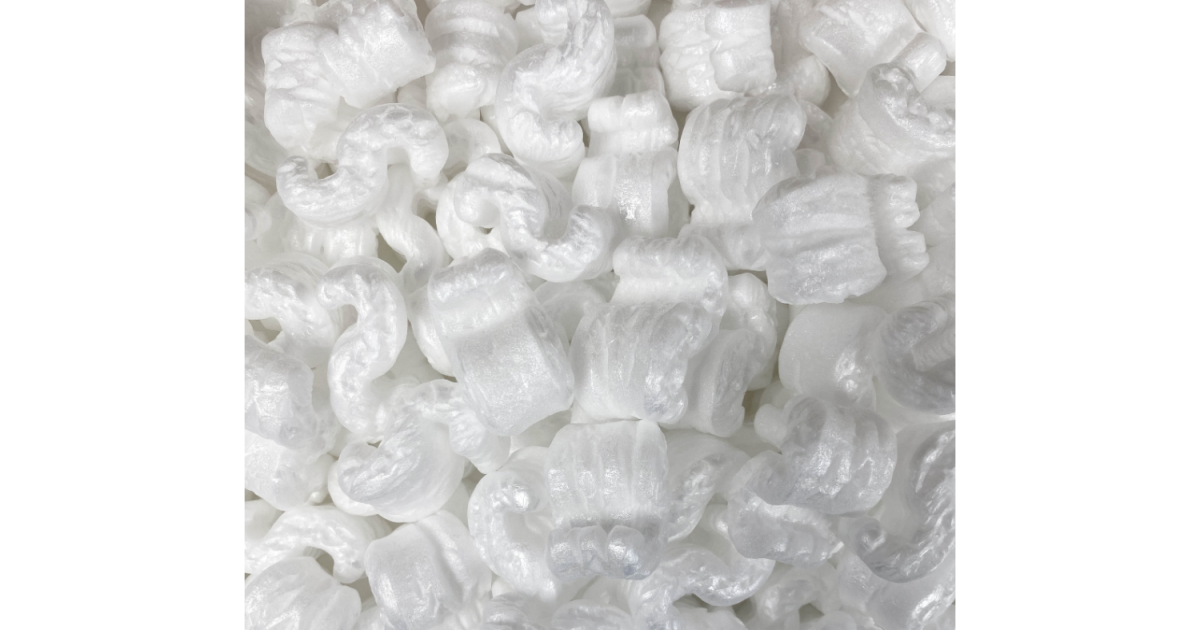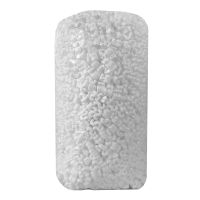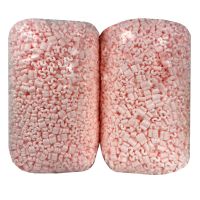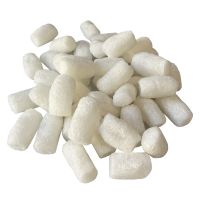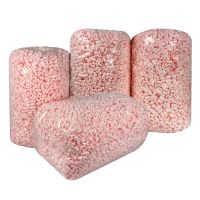THE HISTORY OF PACKING PEANUTS
So you want to know all about packing peanuts and if its the best void-fill to pack your items with... well you've come to the right blog. Thanks to Robert E. Holding we can all hold him accountable for this effective invention. In the year of 1962, Robert invented the machine that processed virgin polystyrene tar that had to go through a steaming process to increase its cell count that ultimately resulted in a lightweight and fluffy structure. This alone is the reason why packing peanuts are great at protecting and absorbing shock while our valuables are in transit. Although it can be a nuisance it protects fragile items that we ship or put in storage on a regular basis. Life before packing peanuts, individuals had to ship or move their fragile items with loose newspaper and I'm sure those same individuals suffered a lot of losses to their possessions because of the lack of shock absorption. In 1965, Dow Chemical eventually picked up the invention and put packing peanuts into production and business was booming ever since. Before you knew it movers and businesses were using these foam peanuts for just about any type of shipment. Since its introduction packing peanuts have come a long way; from various sizes, colors, shapes, recycled material, static-free, and biodegradable options these loose fills have changed the lives of many.
INDUSTRIAL PEANUTS
Industrial packing peanuts are your basic polystyrene styrofoam peanuts that provide versatile protection, and overall keeps items in place with its interlocking capabilities. They're generally the size of peanuts without the shell and mainly produced with 100% virgin polystyrene. In the mid-'90s, Dow Company created peanuts made from recycled polystyrene and it has been commercialized ever since. White foam peanuts often are made with 70% more virgin resin meaning that these peanuts have the capabilities of being reused multiple times without any loss in protection or products being shipped. These polystyrene fillers can also be used and recycled for numerous reasons like insulation, decor, giving them to local packing supply companies, sending them to recycling centers, drain plants, stuff pillows, cover sharp tools, protect your walls, and arts and craft purposes.
Advantages:
- Less expensive than other void-fillers
- Can maintain temperatures for both hot and cold items
- Uses less energy and resources than paper fillers
- Lightweight and low in shipping costs
- Ultimately weighs less than packing paper or bubble roll
Disadvantages:
- Overall hard to disintegrate
- Cause static electricity build-up and sticks to clothing (Not ideal for shipping electronics)
- More costly to recycle
ANTI-STATIC PEANUTS
Just like the polystyrene peanuts, pink anti-static packing peanuts have a peculiar agent applied to them that allows no static charge to be released. This thermoplastic alone is great for packing and safeguarding electronics. Although being statically shocked is minor and may cause you to jump, industrial peanuts do a whole lot of damage to your electronic devices alone. However, what's great about purchasing these peanuts, in particular, is that it work through pushing the metallic parts of the components into the foam due to it being made of a conductive material that will execute that problem. Keep in mind though, electronics in any form, like tiny microchips that might go into making a TV set, must be packaged in high-quality static-free foam packing.
Advantages:
- Static-free and doesn't stick to clothing
- Able to compress with just a pinch using your fingers
- Light in color and weight (Saves your electronics and the cost of shipping)
- Shock absorbent and easily fills up space in boxes
- Non-toxic and can accidentally be swallowed by humans or pets
Disadvantages:
- A tad bit messy and hard to clean up if they get everywhere
- Can ONLY be recycled at a recycling center
- Small and easily breakable material that is difficult to keep packed inside a bale of other polystyrene items
BIODEGRADABLE PEANUTS
For the best and effective environmentally-friendly alternative, use biodegradable packing peanuts. These dissolvable peanuts are constructed from plant-based sources such as; cornstarch, potato, soybeans, or sorghum. They're 100% non-hazardous to children, pets, the environment, and removes edible components like sugar so there is no need to worry if they're accidentally ingested or left in a landfill. These peanuts are absolutely perfect for packing and shipping any type of products due to it also being lightweight, durable, anti-static, and overall soluble in water that leaves no residue behind or will not cause any damage to plumbing if washed down the drain.
Advantages:
- Does not need fossil fuels in order to be recycled
- Anti-static properties
- Facilities that create bio-peanuts are much safer and emit fewer greenhouse gases
- One of the most organic polymers on Earth
Disadvantages:
- Less pliable than other loose fillers due to it breaking down and creating dust
- Can be contaminated if mixed with non-biodegradable products
- Higher weight count compared to other peanuts




